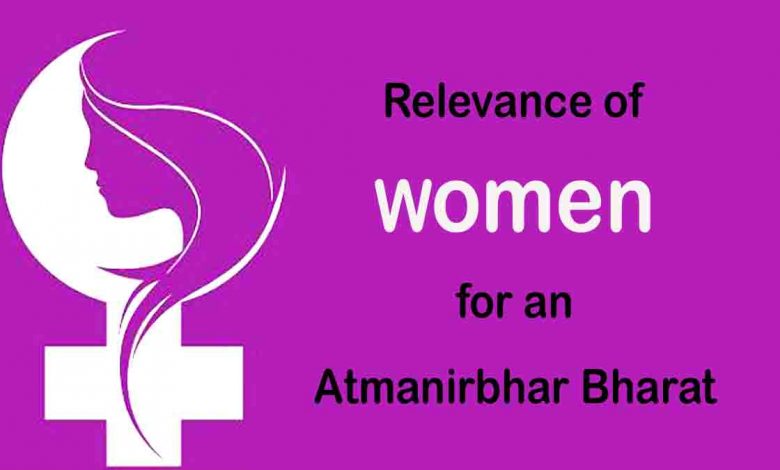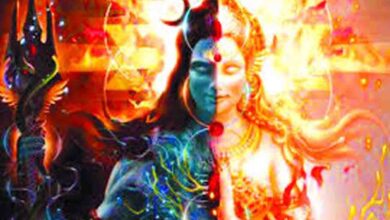Relevance of women for an Atmanirbhar Bharat

 Ramesh Pokhriyal ‘Nishank’
Ramesh Pokhriyal ‘Nishank’
Our Prime Minister Narendra Modi has said, “Every woman has entrepreneurial qualities and values. Women will become stakeholders in decision-making if they are financially independent.” However, over the years, institutionalised belief systems have undermined women’s work capacity. In the 21st century, it is essential to recognise women’s capabilities to work, while building an equitable and Atmanirbhar society.
We must remember that for a society to become Atmanirbhar, it is essential to harness the Iccha Shakti, Gyan Shakti and Karma Shakti of women. The ‘Shakti’ (power) of the women has been hailed from time immemorial, along with a deep-seated prejudice. Gopal Ganesh Agarkar, a 19th-century intellectual and thinker, passionately wanted to remove the prejudice and called for a radical transformation for women’s empowerment. He believed that all paid employment and professions should be linked with brainpower and ability rather than gender.
Agarkar apprised the society with the vision of an egalitarian Atmanirbhar society of the future where “there will be freedom available to men and women to practise the profession of their choice, to acquire as much knowledge as desired, to pass the examinations and obtain the degrees of their liking”. Like Agarkar, Pandita Ramabai, Dr Rukhmabai, Savitribai Phule and many other women activists echoed with the same thought.
With much progress obtained through the years, I would also want to highlight the work of MN Srinivas, a noted anthropologist. In his ethnographic study of south rural India in 1977, he had documented the prevalent belief that when women work for wages, it is an indicator of low family status. This resonates with the present Economic Survey Report 2021-22, the Labour Force Participation Rate (LFPR) of females in 2018-19 was only 26.5 per cent, compared to 80.3 per cent for males. Thereby, India must increase women’s participation in the workforce to the global average of 48 per cent for becoming Atmanirbhar. India should boost its GDP growth with 27 per cent if women did as much formal work as men as per IMP.
Thereby, aligning with the present status of women’s participation in the workforce, I, at this moment, encourage women to connect themselves with this year’s theme of International Women’s Day, i.e. #ChooseToChallenge. The women must choose to challenge to call out gender bias and inequality while becoming Atmanirbhar. To help advance women’s participation, the Government of India under the Prime Minister’s leadership is committed to creating an enabling environment for women; devoid of institutional and structural barriers. The government has taken important initiatives to promote gender quality and welfare while increasing its workforce participation. These include Beti Bachao, Beti Padhao campaign, Pradhan Mantri Ujjwala Yojana, Pradhan Mantri Matru Vandana Yojana, the Maternity Benefit (Amendment) Act, 2017 and the POSHAN Abhiyaan.
Additionally, the Ministry of Education, along with developing a gender-sensitive curriculum, has sanctioned around 6,000 Kasturba Gandhi Balika Vidyalas, a residential girls’ secondary school. Scholarships are being provided to meritorious students of economically weaker sections to reduce their drop out at upper primary class under National Means Cum-Merit Scholarship Scheme (NMMSS). Self-defence training is imparted to girls of class VI to XII under Samagra Shiksha scheme in more than three lakh schools. At higher education level, the ministry has facilitated the development of 16 women exclusive universities. A total of 3,503 supernumerary seats have been created for female students to encourage women student’s participation in IITs. As a result of this, I am glad to share that we have seen a steep upward increase in the number of women enrolled in IITs/PhD. There are now 3,411 women in IIT UG courses in the year 2019 compared to 1,871 in 2015; similarly, 4,597 women are currently enrolled in PhD in the year 2019 compared to 3,283 in 2015.
While the government is encouraging women students’ participation across the school and higher education, few women have already been able to break the shackles of gender prejudices. They are now leading the universities as the vice chancellors – a reform which was long due! Hansa Mehta became India’s first woman vice-chancellor and women’s right advocate. She even got the text of Article 1 changed from “All men are born free and equal…” to “All human beings are born free and equal…”. After her, we have seen multiple women assuming the charge; like professor Jancy James, who became the first vice-chancellor of the Central University of Kerala, acclaimed educationist professor Najma Akhtar became the first woman vice-chancellor of Jamia Millia Islamia. Lately, Sonajharia Minz has been appointed as the vice-chancellor of Sido Kanhu Murmu University (SKMU) in Dumka, Jharkhand; becoming the second tribeswoman in the history of India to be appointed vice-chancellor. This depicts the movement of India to become Atmanirbhar with women leading from the forefront. Thus, while we must celebrate the wonderful women’s achievements, we should also assimilate our efforts to make the Atmanirbhar Bharat, rooted in principles of equality. A new India is being made, sans gender prejudice.
(The writer is the Union Minister of Education)
Monday, 08 March 2021 | Ramesh Pokhriyal ‘Nishank’






